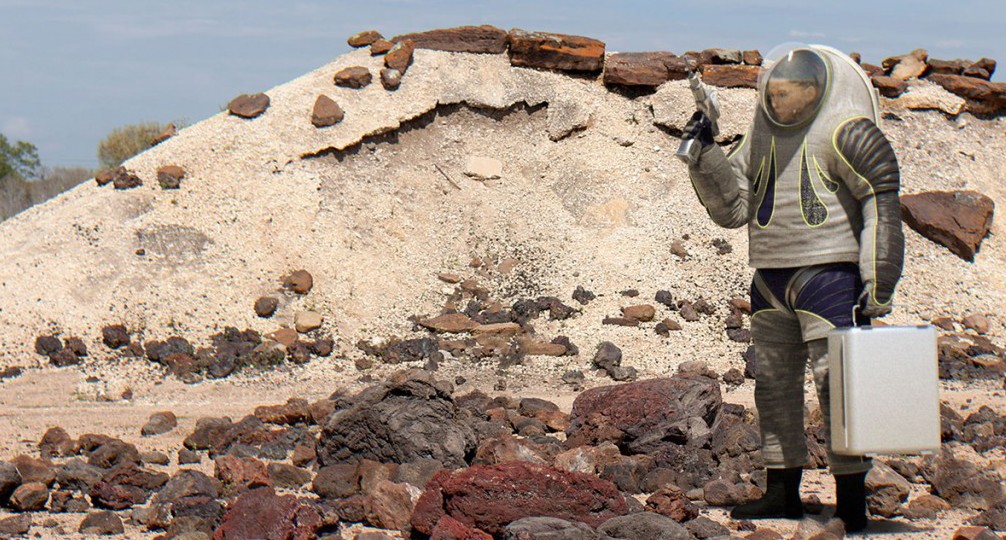There’s really no rush to send humans to explore space. Robots can handle reconnaissance and development. People should only be launched once a livable habitat has been ensured. But billionaires disagree with me, so away we will go.
The clothes are going to be the least weird thing about Mars exploration, but next-wave spacesuits will probably be a radical departure from the equipment we’re used to. In a Conversation article, David Andrew Green and Matteo Stoppa survey the latest in off-planet attire and accoutrements. An excerpt:
Mini spacecraft
Most space suits are essentially mini spacecraft. Although typically just a few millimetres thick, the suits have to provide life support and protection against the vacuum, temperature extremes and micrometeorites of space. Without this protection, the drop in pressure would cause the body to swell up and lethal bubbles of nitrogen gas to form in the blood.
Suits that maintain a lower pressure, such as the 4.3 pounds per square inch (psi) of NASA’s EMU, make it much easier to move and so are less tiring. This makes a huge difference when spacewalks can last up to eight hours. The downside is this also increases the time an astronaut needs to spend breathing pure oxygen to reduce the risk of gas bubbles forming in the blood.
For its Mars suit, however, NASA is looking at much higher pressure designs such as the soft Z-2 and the hard-and-soft hybrid Mark III. These would effectively “dock” into the spacecraft or Mars base building, allowing the astronaut to enter but leaving the suits – and the irritating and potentially toxic Martian dust – outside.
A completely different approach would be to replace suits that pressurise the gas around the body with tight-fitting, stretchy garments that provide mechanical counter-pressure. This idea was first proposed in the 1970s but has only recently become possible with the creation of suitable materials. One example is the “BioSuit” developed at the Massachusetts Institute of Technology (MIT), which uses nickel-titanium shape-memory alloys to form a “second skin.”•
Tags: David Andrew Green, Matteo Stoppa

